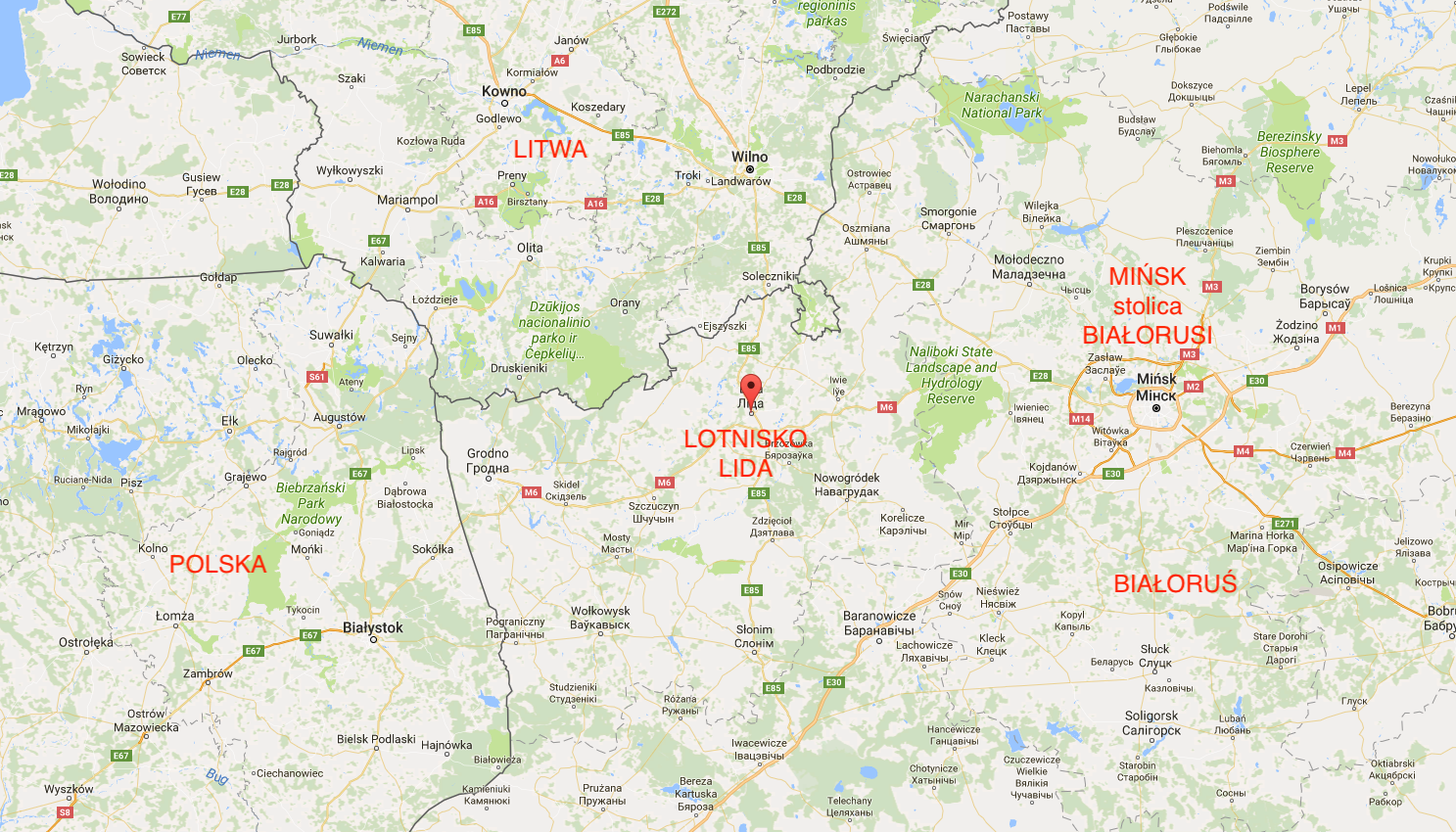Kraków 2017-10-28
Airport in Belarus in the city of Lida.
The Lida airport – history.
The Liga airport was built on the eve of the Great World War. They were established approximately 4 km from the city center to the south-east. The area belonged to the Kasztanowo estate, the Szeptunowski family. There were relatively many forests on the outskirts. The area was relatively flat and did not require a lot of work.
The airport did not play a significant role during the Great World War. From 1919 to 1925, Polish planes were extremely rare here. In 1925, the airport became the base for the 11th Fighter Regiment. On July 14, 1928, an order was issued that Lida and Vilnius (Porubanek Airport) would be the base for the 5th Aviation Regiment. It happened under the decision of Józef Piłsudski to rename the 11th PLM into the 5th PL. However, it was not without the relocation of Squadrons. Fighter squadrons were transferred to Kraków, and reconnaissance squadrons arrived in their place. The first commander of the 5th Air Regiment was Colonel pilot Piotr Abakanowicz (a soldier of the National Armed Forces. In 1947 he was beaten to death by commies in the prison in Wronki). The 5th Aviation Regiment celebrated its holiday on May 31st. This date is related to May 31, 1925, when the first organizational order of the 11th Fighter Regiment was issued.
Many later famous Polish airmen passed through Lida Airport. Among them was Bolesław Orliński, Jerzy Bajan, Połczyński.
In 30 years, the airport was the site of many air shows under the banner of Aviation Week, which gathered thousands of local residents. But in fact, as long as the weather allowed, you could see planes taking off and landing over the airport, and their pilots performing aerial acrobatics. Unfortunately, there were also accidents and disasters. Fallen airmen were buried in the military headquarters in the parish cemetery. In the center of the quarters there was an obelisk about 10 m high, with an eagle on top of it. Unfortunately, during the communist era, the headquarters was systematically devastated and destroyed. Cavalry exercises were also organized on the take-off field.
Contrary to other Polish airports in the Lida, there was no problem with the lack of land for expansion. The 1930s period is the period of construction of large airport facilities, with hangars, fuel depot, car base, warehouses, etc.
In 1938, at the Porubanek airport in Vilnius, the 3rd Fighter Squadron of the 5th Air Regiment was organized, consisting of two squadrons: 151 and 152. In the second half of the 30-year-old, the 5th Aviation Regiment became a powerful military base. In August 1939, before the mobilization was ordered, the peace organization of the 5th Air Regiment was as follows: Command of the 5th Air Regiment in Lida, III / 5th Fighter Squadron in Vilnius-Porubank; 151. Fighter Squadron in Wilnie-Porubank, 152. Fighter Squadron in Vilnius-Porubank, 51. Line Squadron, 55. Line Squadron. IV / 5th Accompanying Squadron in Lida; 53. Accompanying Squadron in Vilnius-Porubank, 56. Accompanying Squadron in Lida, 59. Accompanying Squadron in Lida. The base of the 5th Air Regiment in Lida, the Air Anti-Aircraft Artillery Platoon in Lida. Port Branch in Vilnius-Porubank; Guard Platoon (civilian), Fire Brigade (civilian), Air Anti-Aircraft Artillery Platoon in Vilnius, Training Squadron in Vilnius-Porubank, School Squadron in Lida.
On August 24, 1939, during the emergency mobilization, the following organizational plans were carried out: Demolished: 5th Aviation Regiment, Command IV / 5th Accompanying Squadron and 59th Accompanying Squadron, and other subunits supplemented with military posts. On the basis of the 5th Air Regiment, the Air Base No. 5 was created. The 51st Line Squadron was renamed the 51st Reconnaissance Squadron and subordinated to the SGO "Narew" aviation commander. 55th Line Squadron renamed the 55th Independent Bomber Squadron and subordinated to the commander of the Bomb Brigade. 53rd Accompanying Squadron renamed 53rd Observation Squadron and subordinated to the commander of the "Modlin" Army. The 56th Accompanying Squadron was renamed the 56th Observation Squadron and subordinated to the "Karpaty" Army Air Force Commander. Command of the III / 5 Fighter Squadron and 152nd Fighter Squadron subordinate to the commander of the "Modlin" Army. 151. Fighter Squadron, subordinate to the commander of the SGO "Narew" aviation. The wheeled throw of the Air Base No. 5 was evacuated to Grodno, where on September 20-21, 1939, it participated in the defense of the city against hangovers.
During the war, the airport in Lida was completely destroyed. After the Second World War, Lida became part of the CCCP in the Republic of Belarus with its capital in Minsk. The Lida airport was expanded to meet the needs of aviation equipped with turbojet fighter jets. It was capable of basing three air regiments. After the collapse of CCCP, the airport became the Belarusian aviation base. It received the name of the 206th Assault Air Base. Su-25 and L-39 Albatros planes were stationed here.
Currently, Lida Airport has the ICAO code – UMDD. However, it was not adapted to commercial traffic. It still only has typical military functions. Poor Belarus cannot even hold a single combat squadron here.
In 2013, Lida became the military aviation base of the Russian state. According to the declaration of General Viktor Bondarev, commander of the Russian air force, heavy Su-27 SM3 fighters, assault Su-25 and training L-39 Albatros fighters are based in Lida. The airport is 100% managed by the Russians. However, the airport was not expanded because there was a lack of funds. The Su-27 SM3 is the Su-27 aircraft modernized in the first decade of the 21st century. Due to the permanent crisis, the Russians modernized less than 100 machines.
It is worth noting that there are only four active military airports in Belarus: Baranavichy, Pruzhany, Maczuliszczi near Minsk and Lida. Presumably, the Russians will also occupy the Baranavichy airfield soon. Currently, there is the 61st Belarusian Fighter Air Base, equipped with MiG-29 planes.
Written by Karol Placha Hetman

